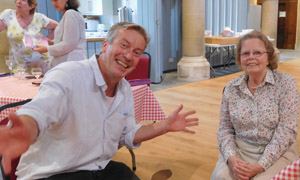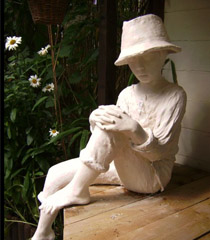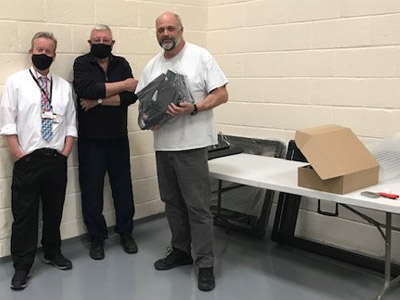Hidden Figures
A Community Engagement Project
The start-up funding for the project was secured from Salisbury City Council and the Salisbury Area Board of Wiltshire Council bolstered by several private donations from individuals. This enabled the purchase of a 3D printer and the materials for the first figure.
Local archaeologist and celebrity Phil Harding had consented to be the first ‘Hidden Figure’ and Wessex Archaeology had the technology – a hand held structured light scanner – and importantly the expertise – in the shape of Will Foster, 3D artist and they generously agreed to help.
Phil reports that the process was quite complicated and time consuming, and that lots of scans were made of different parts of his body. “I don’t know what he did”, Phil recounts, “but Will gave Anthony a scan of me which was then e mailed!”
Here is a 3D interactive link, thanks also to Wessex Archaeology – View 3D model
This file then had to be ‘sliced’ into sections to allow the 3D printer to generate the model. In stepped Luke Liang an A level student at Bishop Wordsworth’s School, who used his computer skills to convert the file so it was suitable for 3D printing.
A 20% scale model of Phil was developed first, to validate the technology and in the end the full size figure had to be printed as 14 different body parts and these were then assembled into one life size sculpture.
Pictured here are members of the project team, left to right: Adrian Green, Director, Salisbury Museum, Cllr Jeremy Nettle, SaSS Steering Group, Adrian Lucas, Technician, Anthony Durman, Hidden Figures Artist, Anne Trevett, Chair SaSS
PLA Many, many hours of printing followed, led by Adrian who produced and transported the ‘body parts’ for assembly in Salisbury. The figures are made of recycled plastic – PLA – so will be a sustainable and environmentally sensitive addition to our city’s artistic and cultural offering.
Salisbury Men’s Shed agreed to help by producing a beautiful base for the first figure. Suzi was part of a team of local volunteers who supported by assembling the pieces of ‘Phil.’
Speaking of the project, Safer and Supportive Salisbury Chair Anne Trevett said: “This project is a true community engagement effort. Led by Anthony and supported by Safer and Supportive Salisbury, we are thrilled that Phil agreed to be our first figure and that so many people have been involved in creating his likeness. Thank you too to the Museum for giving him a home.”
Now on to the next figure!

















